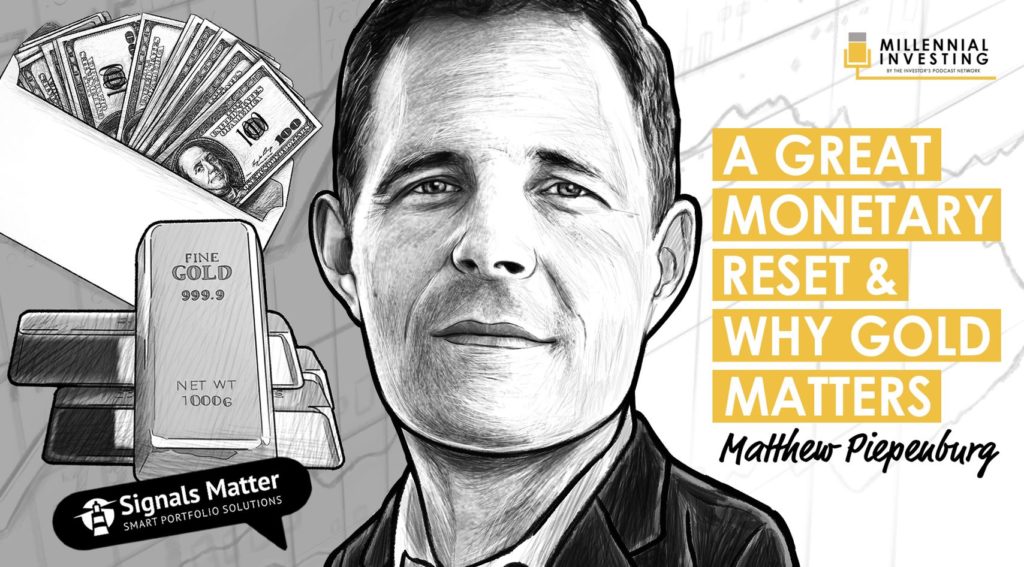Common Sense Investing
Below, we look at the ongoing bull and bear scenarios in a backdrop of never-ending market spin, common sense investing , executive myopia, Fed stimulus and market highs.
Following the Crowd
Crowds are fascinating things. People can get all excited and group-thinking and silly, and funny, and happy.
I was at a pretty swank event this weekend. Big wedding kind of thing. Lots of summer dresses, jackets with school seals on pockets and big hats and people talking about wars, markets, cars, kids and politics.
And drinking. Always lots of drinking.
Meanwhile, I was trotting along on a polo field looking all very swank as well, and laughing at myself, as I often do quietly. Two minutes into the first chukker, I had a clever near-side shot that dribbled into the goal to the delight of my inescapable ego…
Seconds later, having changed leads badly (as I often do), I found myself tossed as per usual from a grey mare and staring up at a very blue sky while—once again—laughing silently to myself as three team mates mocked me in Spanish.
In life, as in crowds, it is often only a fine line between the sublime and ridiculous.
I cross it all the time…
And as for the sublime and the ridiculous, today’s stock market offers a perfect metaphor for both…
The Sublime
Wow. Things are looking good. The Russell 2000 (trading at 87X earnings!) recently hit another all-time high at 1630, up a whopping 340% from its March 09 lows.
In addition, Q1 margins for 2018 posted a record high 11% for the S&P—which is the highest in its history and well above its 20-year average of 8%.
Pretty good news.
And yet…
How is this possible in an economy whose nominal GDP has grown only 3% in the last decade?
In other words: How do small caps climb 300%+ when total business sales in the US for the same period rose by only 2% per year in nominal dollars which, alas, don’t even beat inflation (even the falsely reported kind)?
As I’ve written elsewhere, the disconnect between Main Street (i.e. the real economy) and Wall Street (i.e. the Fed’s fiscal frat party of debt and “stimulus”) has never been greater, nor more ominous.
As our economy stalls (losing a decade of normal growth by every metric from household income, fixed investment to manufacturing and industrial production), the stock market breaks new bubble records almost weekly.
Pretty weird, heh?
Meanwhile, Wall Street’s sell-side is promising 20%+ earnings growth into 2019, and 30%+ energy sector earnings growth for the next five years. Such a rate would require oil to return to $100/barrel—and stay there.
The bulls are also telling us that Capex is about to rise from the ashes and companies are actually going to spend all their Trump “tax savings” on something other than dividends and stock buy-backs—i.e. they are considering investing in their actual companies.
Good on ya!
The Ridiculous
Hmmm. In fact, Capex for Q1 is indeed up by 19%. Ok. Groovy.
But then again, Capex last year was down 6%, and the year before that, it was down 7.5% (representing a three-year growth rate of only 1.6%), so one could suppose it was time for these publicly traded folks to pony up and do some company-specific spending…
Eh hemmm. In fact, Capex by S&P companies is right back to where it was in Q1 of 2015…
So, what have these companies really been up to during this post-08 bull “recovery” handed to it by a central bank dishing out steroids (printed money and low rates) faster than Lance Armstrong’s hidden medical team?
Well, they’ve been drinking their own moonshine.
That is, they’re buying their own stock–which pushes up share prices, shrinks the size of the share pool and thus artificially pumps EPS figures on balance sheets thoroughly (and I mean thoroughly) corrupted by Ex-Items accounting scams made legal, provided you pay the right tax attorneys, which these guys do…
Remember Cisco, Exxon, Microsoft and Hewlett Packard’s stock buy-back karma in 08?
Oh, and there’s been a lot of levered buy-outs, bad M&A deals and the giddy paying of unearned dividends. Remember what happens to such “smart” deals—think Time/AOl, or JDS Uniphase and SDL during the pre-08 “M&A mania”…
In short: Steroids (aka” “bubble finance”) buys a lot of fun—until it tanks.
And we’ve seen this before. Remember those happy days just prior to the 08 wake-up call? Companies being bought at peak valuation, with peak leverage, at peak multiples (think WorldCom, Clear Channel, Alltel, Hilton) just before they, uh…tanked.
But certainly, the executives of today’s ripping companies won’t make such mistakes en mass? Certainly, they learned about balance sheets and market history in B-School? Certainly, they are driven by our grandfather’s common sense and the need to protect their companies from over-indebtedness, reckless salaries and wayward fiscal partying?
Surely company chiefs are saving for rainy days, protecting employee interests and modestly judging their corporate leadership by the soundness of their balance sheets rather than the share price de jour of enterprises surfing a dangerous market wave compliments of a wayward (clueless?) Fed?
If only…
Sadly, today’s executives, like anyone addicted to a good thing (i.e. central bank engineering of just about anything and everything) is, well: addictive.
CIO’s, like most mortals, react to incentives, and the incentives in today’s board room boils down to one thing: keep share prices (and CEO salaries) up!
The C-Suite Addiction
Why? Because executives get paid in share values, not moral values or balance sheet realism. Today’s massively over-valued markets, and the massively over-valued companies that pump them, are built upon companies diverting cash flows into stock pumping, headline making mergers and debt-driven dividend consistency.
Why? Because today everything boils down to share pricing not share realism. Net result: pump up the pricing.
Such incentives make for short-term stock/CEO heroes who eventually become longer-term goats. But at least during the hero phase, it feels pretty good to be in the C-suite. After all, it gives these guys plenty of time to build a nest-egg, buy a few second homes and keep their kids at Choate and Exeter.
Today, the CEO-to-worker pay ratio at many publicly traded companies is an immorally high 333 to 1. In my grandpa’s days working an entire career in the motor industry, the ratio was 20:1. Times and values (as well as valuations) sure have changed…
In other words, today’s executives have little incentive or reason to be conservative or even modest. When markets fall, they can all look at themselves and the folks at CNN and act like “market forces” (rather than stock-based greed) were to blame.
Awe shucks.
And sometimes, as they are licking their self-inflicted wounds, these very same “executives” get a nice bailout from US Taxpayers rather than a slap on the wrist (or behind) from regulators or the cadres of shareholders and pension funds who got burned.
How do I know this? Because I’ve been there. Seen it before…
I won’t name any names, but a lot of my classmates were “executives” at some of those banks and S&P names that burned you in 08 and will burn you again when this next “everything bubble” does what all bubbles do, viz: “pop.”
Only this time there won’t be a “bailout.” Shareholders beware…
Debt: The Wind Beneath Our Wings
All the current (and predicted) market good news coming out of Wall Street is based on one simple word: debt. S&P companies were taking on tons of it to impress shareholders and share prices (and executive salaries).
Heroes!
But as I’ve written ad nauseum and said more than once, debt is only fun until, it well…isn’t.
As yields rise and the cost of hundreds of billions in corporate bonds and notes gets too painful to sustain, these executive heroes quickly become goats as the bull ducks out and the bear finally roars.
Unless, like the MSM and over-paid sell-side pundits, you believe markets only go up and the Fed will save you. After all, bears are so out of fashion today. So uncouth. So annoying.
Frankly, I don’t like bearish talk either. If I just looked at earnings and projections I’d be a bull too. But I have this pesky problem of measuring hype against debt and balance sheets against bull sh!%. And debt driven markets are not markets, they’re just debt driven, which is to say: delusions.
Last week, yields on the 10 Year UST touched 3.1%–which is up 69% from the 1.84% number posted in 2016.
Folks, this means the cost of borrowing (and the debt party) is about to cross that oh-so fine line from sublime to… ridiculous.
Of course, the crowd of Wall Street bulls and anchormen are telling us not to worry. They tell us the yield shock is already “priced in,” that everyone saw it coming. Alas, they tell us not to discount future pricing. (An increasingly bearish Mr. Dimon at JP Morgan even thinks the rate will soon hit 4%.)
And yet on Wall Street: No Worries…
But floating rate debt—which hitherto kept the Wall Street party alive—is about to hit Q2,3 and 4 earnings and keep hitting it going forward. After-tax interest expenses (i.e. borrowing costs) for S&P names (the “heroes”) will soon see debt expenses rise from the current $20.00/share to at least double that in the coming years.
If you think rising interest expenses can coincide with the rising earning forecasts on the street, or that not even a modest recession is likely, or that 20% growth will continue for five more years (as the Trump financial team tells us), well that seems a bit…delusional.
The Good Guys–Going Against Crowds
And delusional crowds (and times) can make sane investors feel a bit crazy, even bewildered.
I know a few good executives who run companies like sane men run households: that is with common sense. They can’t understand how a government and a market can feel safe (or even self-impressed) when their “success” is all about debt rather than actual, you know… free cash flow.
In my few decades on this funny earth, I’ve been blessed with wonderful mentors, in everything from classrooms, baseball diamonds, polo fields and even markets.
What did they all have in common? Humility, modesty, patience and common sense—four traits largely absent in today’s headline making “new economy” of executive dragon slayers and cheerleading financial “journalists.”
Texas Style
One such mentor who will go unnamed here started a company decades ago in the Midwest that now resides in good ol Texas. He didn’t go to Harvard and doesn’t drive a Ferrari or have a mansion on East Hampton. He married his high-school sweetheart and his closest advisor knew him since junior high.
This fellow runs a company that provides services, rather than hype. (He gets offers to sell it on a monthly basis…) He provides jobs. His company, like his family, has no debt and when cycles are tough, he speaks and acts frankly rather than borrowing money to look good.
He’s also made money. Lots of it.
How? The old-fashioned way. By focusing on his company, his services, his balance sheet and his people. In fact, this guy is so normal and so sane, he sometimes looks at these markets and questions his own sanity, as if he were missing something? As if he were crazy to distrust a government, market and media that seems to be telling us that “recoveries” based on debt and hype actually, well, “work.”
What do I tell him?
Nothing much, really.
Deep down, he, like the rest of us with a gift for common sense and frank-speak, knows that a party placed on a credit card is no party at all, especially if one doesn’t have the cash to pay the bill when the music dies out and the beer is gone.
Mentors like him know that patience, a clear-head and humility are needed more than ever in times of crowd crazy—and these markets are indeed that: crazy. After a decade bull market, 660 global interest rate cuts, $20T of global QE/Money Printing and years of rewarded dip-buying, market fear (and common sense) has left the building.
Party on!
Today, we see an investor crowd of top-chasers with their collective eyes seeking a “return-on-capital” far more than we see good old-fashioned “return-of-capital” humility.
And whenever and however this current market bubble reverts to the mean of normalcy, when prices correct and the rest of the crowd is in shock, this patient Texan, like many of you who built your portfolios and cash positions of brick, rather than straw or mud, will be the last ones standing/laughing
—and the first ones buying…
As for now, buying at tops and on hype is tempting, but great men, like great mentors, executives and investors, know that nothing good comes from following crowds.
The better players trot, gallop or cantor right past them.




